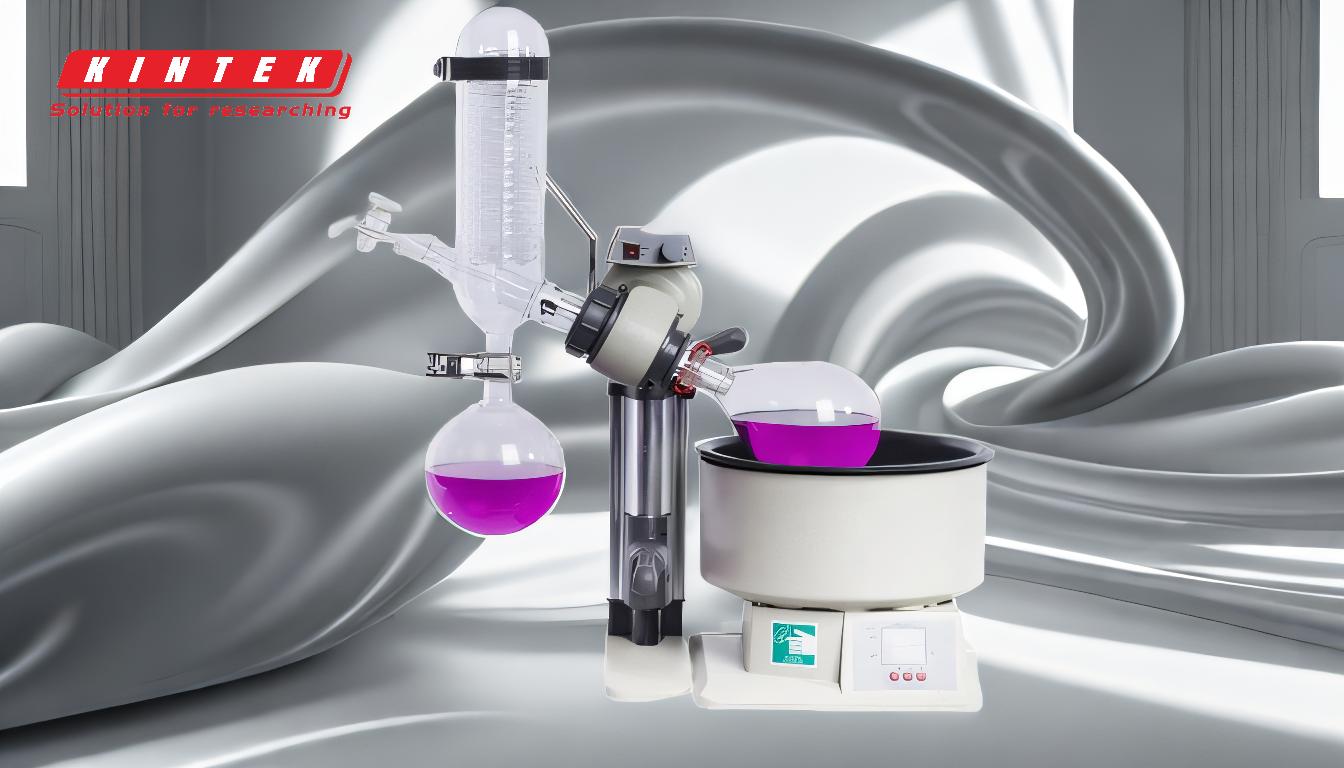The rotation speed (rpm) of a rotary evaporator typically ranges from 0 to 280 rpm, depending on the model and application. For benchtop-scale rotary evaporators, a rotation speed of 250–280 rpm is recommended for maximum turbulence, ensuring efficient evaporation. However, most standard rotary evaporators operate within a range of 0 to 220 rpm, which balances efficient evaporation with high contact torque. The speed is controlled using a monitor or a frequency converter with a digital display, and adjustments are made via a speed control knob. The specific rpm setting depends on the solvent being evaporated, the volume of the sample, and the desired evaporation efficiency.
Key Points Explained:

-
Typical RPM Range for Rotary Evaporators:
- The rotation speed of a rotary evaporator generally ranges from 0 to 280 rpm.
- For benchtop-scale rotary evaporators, a speed of 250–280 rpm is recommended to achieve maximum turbulence, which enhances evaporation efficiency.
- Most standard rotary evaporators operate within a range of 0 to 220 rpm, which is sufficient for efficient evaporation while maintaining high contact torque.
-
Control Mechanisms for Rotation Speed:
- The rotation speed is controlled using a monitor or a frequency converter with a digital display.
- A speed control knob is used to adjust the rotation speed to the desired level.
- Before turning on the motor switch, the speed control knob should be turned counterclockwise to the end to ensure proper operation.
-
Factors Influencing RPM Selection:
- Solvent Type: Different solvents may require specific rpm settings for optimal evaporation. For example, solvents with higher boiling points may benefit from higher rpm settings to increase turbulence and evaporation rates.
- Sample Volume: Larger sample volumes may require higher rotation speeds to ensure uniform evaporation.
- Evaporation Efficiency: Higher rpm settings (e.g., 250–280 rpm) are recommended for maximum turbulence, which improves evaporation efficiency.
-
Applications and Bottle Sizes:
- The size of the evaporator bottles is determined by the volume of materials to be evaporated. Common sizes include:
- 2L, 3L, and 5L for small-volume laboratory tests.
- 5L, 10L, and 20L for pilot tests.
- 20L and 50L for pilot tests and production.
- In special cases, a continuous feed tube can be used to expand the volume of the evaporation bottle for continuous distillation.
- The size of the evaporator bottles is determined by the volume of materials to be evaporated. Common sizes include:
-
Vacuum and Temperature Considerations:
- Most common lab solvents require a low-vacuum pump (which can be replaced by a sink aspirator) and temperatures within the range of 25°C to 50°C.
- Lower temperatures slow the evaporation process but reduce the risk of bumping, which can occur at higher speeds or temperatures.
-
Practical Tips for Operation:
- Always start with the speed control knob turned counterclockwise to the end before turning on the motor switch.
- Gradually increase the rotation speed to the desired level, ensuring that the sample is evenly distributed in the flask.
- Monitor the evaporation process closely, especially when operating at higher rpm settings, to avoid issues such as bumping or uneven evaporation.
By understanding these key points, users can optimize the rotation speed of their rotary evaporator for specific applications, ensuring efficient and safe operation.
Summary Table:
| Key Factor | Details |
|---|---|
| Typical RPM Range | 0–280 rpm, with 250–280 rpm recommended for benchtop models. |
| Control Mechanism | Monitor or frequency converter with a digital display and speed control knob. |
| Influencing Factors | Solvent type, sample volume, and desired evaporation efficiency. |
| Bottle Sizes | 2L–50L, depending on application (lab tests, pilot tests, or production). |
| Vacuum & Temperature | Low-vacuum pump and temperatures between 25°C–50°C for most solvents. |
| Practical Tips | Start with the knob counterclockwise, increase gradually, and monitor closely. |
Need help optimizing your rotary evaporator settings? Contact our experts today!











